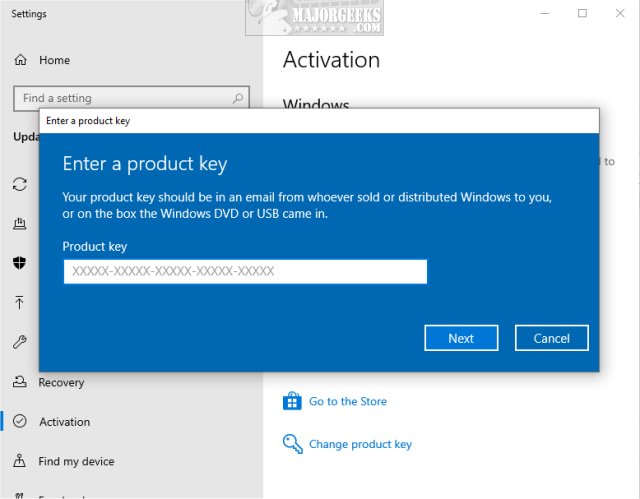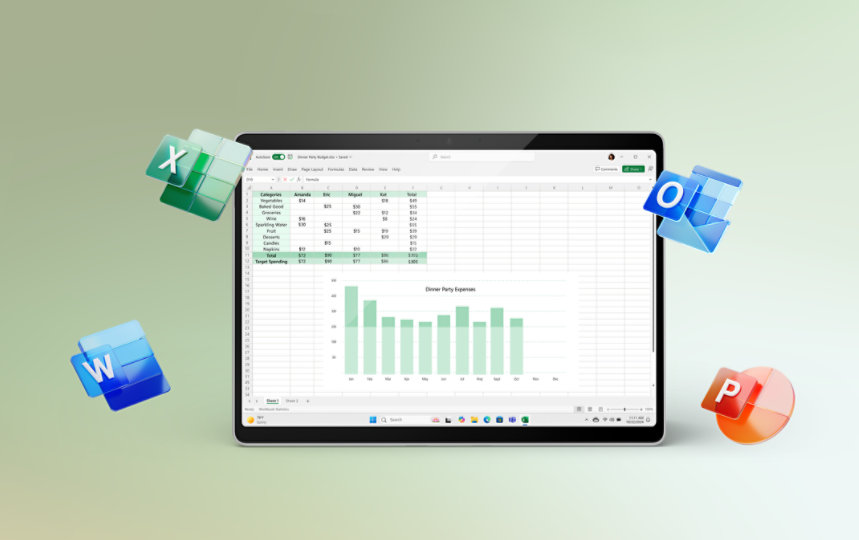Top 10 Tips For Understanding Activation And Compatibility When Buying Windows 10/11 Pro/Home Products
It is crucial to understand the process of activation and what compatibility means when buying Windows 10/11 Home/Pro product activation/license key. This will allow you to avoid issues in the future and will ensure that the installation is smooth. These are the top 10 tips to help you understand these issues:
1. Make sure that Windows is compatible with the Versions
Ensure that you are purchasing the right key to Windows. Windows 10 keys are different from Windows 11 keys. If you purchase the Windows 10 product key, it won't work with an upgrade to Windows 11 upgrade unless the key is specifically marked as an upgrade.
The key has to be specific to either Home or Pro. Keys cannot be interchangeable.
2. Different keys for 32-bit and 64-bit Versions
Confirm that your key is compatible, regardless of whether you're running a 32-bit operating system or a 64-bit one.
While the majority of keys encompass both architectures, it's recommended to verify, as some OEMs or specific use cases might have restrictions.
3. Stay clear of Cross-Region Activation Issues
Keys may have restrictions on regions, meaning that a purchased key for one country might not work in another. Verify the region restrictions of any key you purchase in order to ensure that activation is not a problem.
A key purchased from a vendor outside the area or from an online market could be invalid.
4. Learn the Differences Between Upgrade and Full Versions
An upgrade key must be an activated, pre-existing version of Windows. Do not buy an upgrade key if the Windows installation isn't working.
Windows is activated by using a full version key to activate new installations.
5. Join your copyright for Easy Reactivation
In the event of activating digital licenses you can connect it to the Microsoft profile. It is easier to reactivate Windows in the event that you switch the hardware or switch devices.
To complete this process, visit Settings > Update and Security > Activation, and follow the steps to connect your account.
6. Activate immediately to confirm the validity
You must activate it immediately after you get the key in order to verify that it's legitimate and functioning. It's possible that issues with activation could indicate that the key is not legitimate copyright or used.
If a damaged key is found, the possibilities for a refund or dispute resolution are extremely limited if activation is delayed.
7. Understanding OEM limitations on activation
Once activated an OEM key is locked to a specific item. It can't be transferred to another computer, even in the event that the original hardware fails.
If you intend to change or upgrade your hardware frequently, opt to purchase the retail license. It gives you greater flexibility.
8. Volume and Academic Keys are subject to specific rules
Volume Licenses are not able to be used indefinitely. They could require activation through an KMS solution (Key Management Service) as well as other enterprise solutions which are not appropriate for use at home.
Check that the key you purchase is compatible with the intended use. A wrongly purchased volume license might deactivate after a short time.
9. This tool can diagnose problems that arise from activation
Windows provides an Activation Troubleshooter to help diagnose problems. It is located under Security and Settings > Update > Activation>Troubleshoot.
The troubleshooter could assist in the event of hardware malfunctions or validate the validity of the authenticity of a key.
10. Digital keys and physical keys use different activation procedures
Digital keys may or may not include a product key. They are tied to your copyright and are connected to your copyright. Once you have signed in, the activation may be automatic.
Keys that are physical (like those bought with a COA sticker) require manual entry at installation. Be sure to be aware of how your particular type of key operates in order to avoid confusion.
Additional Tips
If you are unsure about online purchases, beware of ESD keys (Electronic Software Delivery). Always confirm the legitimacy and safety of any online platform.
Make sure that your hardware is compatible before you upgrade to Windows 11. Windows 11 does not support all hardware, even older computers with Secure Boot and TPM 2.0.
For more detailed information about the type of license you have, you can use the Windows Activation Status Tool.
By understanding the compatibility and activation issues to make an informed decision when buying Windows 10/11 key and ensure your operating system will run without issues. View the top rated buy windows 10 for website advice including windows 11 pro license key, windows 10 pro product key buy, buy windows 10 pro cd key, windows 11 pro license key, buy windows 10 pro, buy windows 10 pro cd key, windows 10 and product key, buy windows 11 home, license key windows 10, windows 10 license key purchase and more.

Top 10 Tips For The Type Of License Type When Buying Microsoft Office Professional Plus 2019/2021/2024
When buying Microsoft Office Professional Plus 2019 2024, 2021, or 2021 it is crucial to be aware of the different types of licenses available to make sure you're purchasing the right one for your requirements. The terms, restrictions and support options offered by various types of licenses vary. Here are 10 top tips to help you understand the differences between various types of license.
1. Know the most important types of licenses
Microsoft Office Professional Plus comes in three different license types: Retail, OEM (Original Equipment Manufacture), and Volume Licensing. Each type of license has distinct restrictions and terms.
Retail: A single purchase, typically tied to a particular user. The license may be transferred to an additional device within the same user if necessary.
OEM: The device is tied to the original device and can't be moved. A lot less expensive, but not as adaptable.
Volume Licensing (also known as Multi-user License) Ideal for businesses or educational institutions.
2. Retail Licenses for Flexibility
Retail licenses provide the greatest flexibility. It permits the installation of Office on the device and also transfer of the license if you decide to upgrade or replace your PC. This is a great option for users who upgrade their hardware or switch devices from time to time.
3. OEM Licenses at Lower Cost
OEM licenses cost less but aren't transferable. They also have to be dependent on the device. These are only available to devices that are pre-installed Office by the makers. A OEM license will cost less, but it will limit your flexibility in the case of building or upgrading a customized PC.
4. Volume Licensing: What do you need to know
Volume Licensing was created for government, business as well as educational institutions. It could be a better value in the event that you intend to purchase Office for several computers or users. It also offers benefits like centralized management, easier deployment, and volume discounts.
5. Multiple Device Licenses Multiple Device Licenses
Retail licenses cover only one or two computers (such as a laptop or desktop laptop) and Volume Licenses provide coverage for thousands of devices. When buying, make sure you know how many devices your license covers.
6. Check for License Transferability
Retail licenses can generally be transferred between devices (as as they're disabled on the prior device) However, OEM licenses are locked to the original device and aren't able to be transferred. This is a crucial consideration if you plan to move computers often.
7. Examine the User Licenses and Consider Device Licenses
Some licenses are assigned per individual user, while others are allocated to devices. If you're looking to purchase Office for someone who is using multiple devices at once select user-based licenses like those included with Microsoft 365 Subscriptions or Volume Licenses.
8. Assess Support and Updates
Microsoft generally provides complete support to retail licenses, and volume licenses are also supported by regular updates. OEM licenses come with a restricted support level and software updates can cease once the device the software is connected to has been removed from the manufacturer.
9. Understanding Upgrade Licensing
If you have an Volume License (or Retail License) then you could be eligible for an upgrade to the latest version of Office at a discount or through the Microsoft Software Assurance programme (for Volume Licensing).
OEM licenses aren't usually upgradeable, therefore you'll need to buy a different license if you plan to upgrade Office.
10. License Agreement Terms
Microsoft has issued the license agreement for Office Professional Plus. These terms include any restrictions or rules regarding the transfer of software, or rights to use it on specific devices or for specific purposes (e.g. for business or for personal use). Understanding the terms can help you to avoid any unexpected limitations.
The article's conclusion is:
The right Microsoft Office Professional Plus license depends on the needs of your organization, business or personal. Understanding the differences between Retail Licensing, OEM Licensing, and Volume Licensing can help you make a well-informed decision determined by cost as well as the flexibility and support, scalability as well as other elements. Verify the licensing terms and ensure you are buying the right version. Have a look at the top rated Microsoft office 2024 release date for blog examples including Microsoft office 2024, Office 2019 download, Office 2021, Microsoft office 2024 download, Microsoft office professional plus 2021, Microsoft office 2021 lifetime license, Microsoft office 2024, Office 2019 professional plus, Microsoft office professional plus 2021, Ms office 2024 and more.

Comments on “Handy Guide To Deciding On Windows Microsoft Office Professional Key Websites”